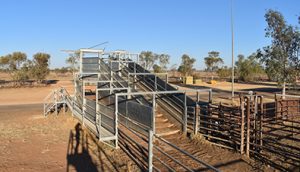Read the latest information on
Foot-and-mouth disease
 AHA has teamed up with representatives from the Australian Livestock Markets Association (ALMA) and the Northern Territory Cattlemen’s Association (NTCA) to develop a comprehensive biosecurity plan template for saleyards.
AHA has teamed up with representatives from the Australian Livestock Markets Association (ALMA) and the Northern Territory Cattlemen’s Association (NTCA) to develop a comprehensive biosecurity plan template for saleyards.
“As the peak body representing saleyards throughout Australia, ALMA is constantly looking for ways to assist our members to improve, develop and grow their businesses, said Ian Lovegrove, Northern and Western Field Manager from ALMA.
“It was with this in mind that we readily seized the opportunity to partner with AHA on biosecurity to develop this Saleyard Biosecurity Plan,” said Mr Lovegrove.
The plan adopts a risk management approach so that saleyards can reflect on their current practices, regional risks and the way their business operates to develop a comprehensive plan that accurately addresses their own unique risks.
James Christian from NTCA said the biosecurity plan is a document saleyards can fall back on in the event something goes wrong.
“If you forget in the heat of the moment what it is you should do, or could do, then you can refer back to your biosecurity plan. It is all written down and there should be a very logical and sequential set of steps you can take in order to minimise risks,” said Mr Christian.
“It is important that we maintain biosecurity to the best of our ability. We need to work with the rest of industry to make sure things happen – from the farm gate up through the supply chain. We all need to work together to keep Australia clean and safe,” said Mr Christian.
The plan will be available to all saleyards in Australia with additional planning resources available for ALMA members
This article was contributed by AHA’s Biosecurity Extension team, having been first published in The Link. For more information please contact Rachael O’Brien; ROBrien@animalhealthaustralia.com.au.